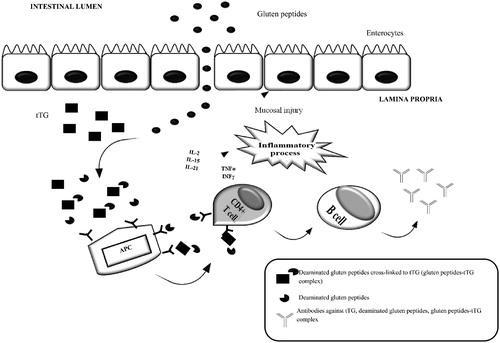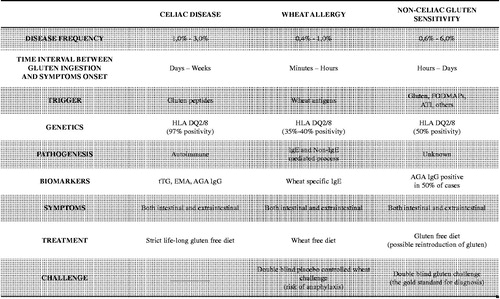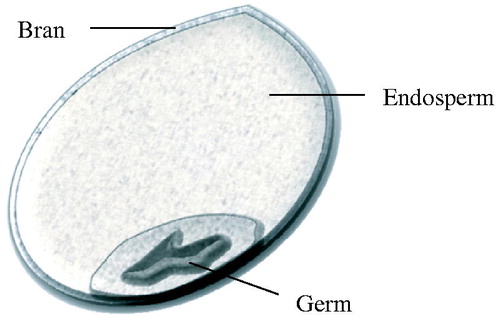Figures & data
Figure 2. Antigen presentation, inflammatory process and antibody production in celiac disease. Gluten peptides, after crossing the intestinal epithelium, reach lamina propria where they are deamidated by the enzyme tissue-transglutaminase (tTG) and are presented by HLA-DQ2 or HLA-DQ8-positive antigen-presenting cells (APC) to CD4 + T cells. CD4 + T cells activate both an inflammatory process leading to small bowel mucosal injury (TH1 reaction), and stimulate B cells to produce antibodies against tTG, deaminated gluten peptides, gluten peptides-tTG complex (TH2 reaction).

Figure 3. Diagnostic flow-chart in suspected gluten-related disorders. *According to Salerno experts’ criteria. **Positive challenge is defined as a variation of at least 30% of one to three main symptoms between the gluten and the placebo challenge. Gluten-free diet (GFD), human leukocyte antigen (HLA), celiac disease (CD), wheat allergy (WA), fermentable oligosaccharides, disaccharides, monosaccharides and polyols (FODMAPs), non-celiac gluten sensitivity (NCGS).

Figure 4. Characteristics of celiac disease, wheat allergy and non-celiac gluten sensitivity. Human leukocyte antigen (HLA), anti-tissue transglutaminase antibodies (tTG), anti-endomysial antibodies (EMA), anti-gliadin antibodies (AGA), fermentable oligosaccharides, disaccharides, monosaccharides and polyols (FODMAPs), α-amylase/trypsin inhibitors (ATI).


